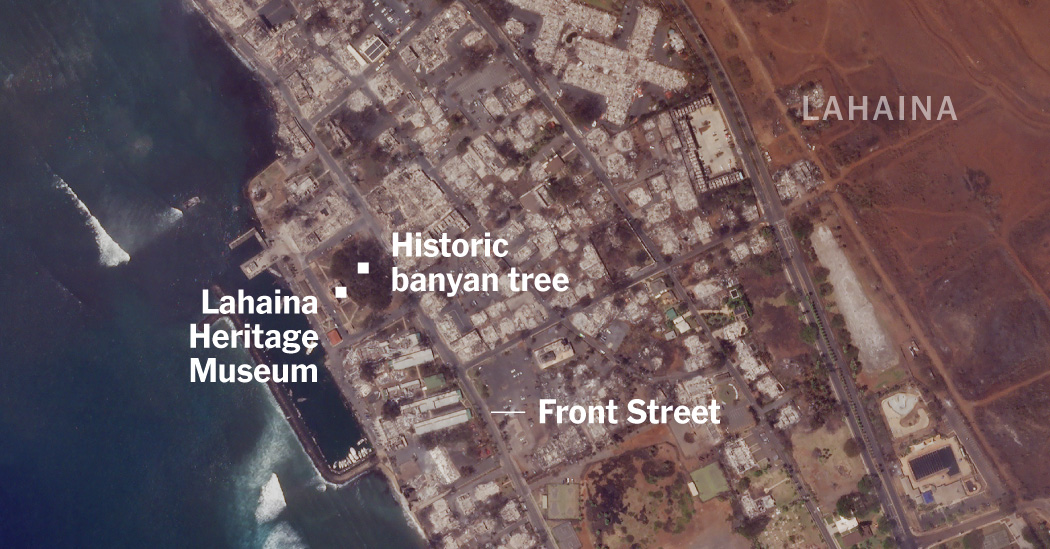California Firefighters Are Training A.I. to Detect Wildfires
For years, firefighters in California have relied on a vast network of more than 1,000 mountaintop cameras to detect wildfires. Operators have stared into computer screens around the clock looking for wisps of smoke.
This summer, with wildfire season well underway, California’s main firefighting agency is trying a new approach: training an artificial intelligence program to do the work.
The idea is to harness one of the state’s great strengths — expertise in A.I. — and deploy it to prevent small fires from becoming the kinds of conflagrations that have killed scores of residents and destroyed thousands of homes in California over the past decade.
Officials involved in the pilot program say they are happy with early results. Around 40 percent of the time, the artificial intelligence software was able to alert firefighters of the presence of smoke before dispatch centers received 911 calls.
“It has absolutely improved response times,” said Phillip SeLegue, the staff chief of intelligence for the California Department of Forestry and Fire Protection, the state’s main firefighting agency better known as Cal Fire. In about two dozen cases, Mr. SeLegue said, the A.I. identified fires that the agency never received 911 calls for. The fires were extinguished when they were still small and manageable.
After an exceptionally wet winter, California’s fire season has not been as destructive — so far — as in previous years. Cal Fire counts 4,792 wildfires so far this year, lower than the five-year average of 5,422 for this time of year. Perhaps more important, the number of acres burned this year has been only one-fifth of the five-year average of 812,068 acres.
The A.I. pilot program, which began in late June and covered six of Cal Fire’s command centers, will be rolled out to all 21 command centers starting in September.
But the program’s apparent success comes with caveats. The system can detect fires only visible to the cameras. And at this stage, humans are still needed to make sure the A.I. program is properly identifying smoke.
Engineers for the company that created the software, DigitalPath, based in Chico, Calif., are monitoring the system day and night, and manually vetting every incident that the A.I. identifies as fire. Even what seems like a straightforward task — teaching a computer to recognize smoke — has been a painstaking process that is far from complete, engineers say. There are many false positives.
“You wouldn’t believe how many things look like smoke,” said Ethan Higgins, a chief architect of the software.
Fog. A little haze in front of a mountain. Dust kicked up from a farmer’s tractor. Steam rising from geothermal plants. Camera flare from a rising sun. All of these have tricked the computer into thinking there was a fire.
Engineers and firefighters are spending their days training the A.I. program to understand what is — and what is not — fire.
“I don’t think this robot is ever going to take my job,” said Andrew Emerick, the duty chief for Cal Fire’s northern region. Mr. Emerick, an experienced operator of the cameras, gives the example of the deliberately set fires in agricultural areas: vintners burning branches after an autumn pruning or rice farmers burning stalks after harvest.
Mr. Emerick knows the area and understands the context — these are not fires that he needs to dispatch engines and aircraft to snuff out. But he is not sure the A.I. program will ever fully understand those nuances.
“What we do is going to require some sort of human intervention, someone with experience to say, ‘Hey, do something about this,’ or ‘No, don’t do something about it,’” he said.
During two days in July, when the A.I. trial had been in operation for only two weeks, the system flagged fires with varying degrees of certainty. A hilltop camera trained onto a raging fire in Topanga Canyon, west of Los Angeles, a blaze that was sending up a column of billowing smoke. The A.I. framed the fire with a red square and calculated a 71 percent probability that it was indeed a fire. When asked why the A.I. had come in with such a relatively low probability for a seemingly obvious fire, Neal Driscoll, a geophysicist at the University of California, San Diego, and a leader of the A.I. project, answered that the system was still in its early stages.
“It’s two weeks old,” he snapped. “What did you recognize at two weeks old?”
Operators are constantly teaching the A.I. program to properly identify fires. At the main dispatch center for Southern California, a squat building on the edge of March Air Reserve Base, Cal Fire officials stared up from their desks at a jumbo screen that resembled part of a made-for-Hollywood war room. The A.I. program alerted the Cal Fire officials to an image taken at Onyx Peak in the San Bernardino Mountains. The A.I. had placed a red box around a plume of smoke in the picture.
“It might be a dumpster fire, it might be a vehicle fire, it might be a vegetation fire,” said Mr. SeLegue of Cal Fire. With a few mouse clicks, the operator confirmed to the A.I. program that the image was indeed smoke from a fire.
“We are feeding into the logic of the system,” Mr. SeLegue said.
The A.I. system churns through billions of megapixels every minute, images generated by the network of cameras, which cover around 90 percent of California’s fire-prone territory, according to Dr. Driscoll. The images from the cameras are part of a project known as AlertCalifornia and are viewable by the public on a website managed by the University of California, San Diego.
Mr. SeLegue said the A.I. camera system was only one of a number of ways that Cal Fire was alerted to fires. In addition to 911 calls from residents, commercial pilots flying over the state have in the past called into control towers to report fires.
And in 2019, Cal Fire gained access to a much more systematic detection tool. The United States military offered to use its highly classified network of spy satellites as well as drones and other aircraft to alert the state agency when fires were detected. Because of the classified nature of the intelligence, the data is “sanitized,” according to Mr. SeLegue, and comes with a 10- to 12-minute delay. The partnership, which has been named Fireguard, came together after the deadly 2018 Camp fire when military officials realized they knew about it before Cal Fire did.
Cal Fire’s mission is to suppress 95 percent of all fires when they are 10 acres or less. The A.I. program will help the agency meet that goal, said Dr. Driscoll.
“The success of this project will be the fires you will never hear about,” he said.


